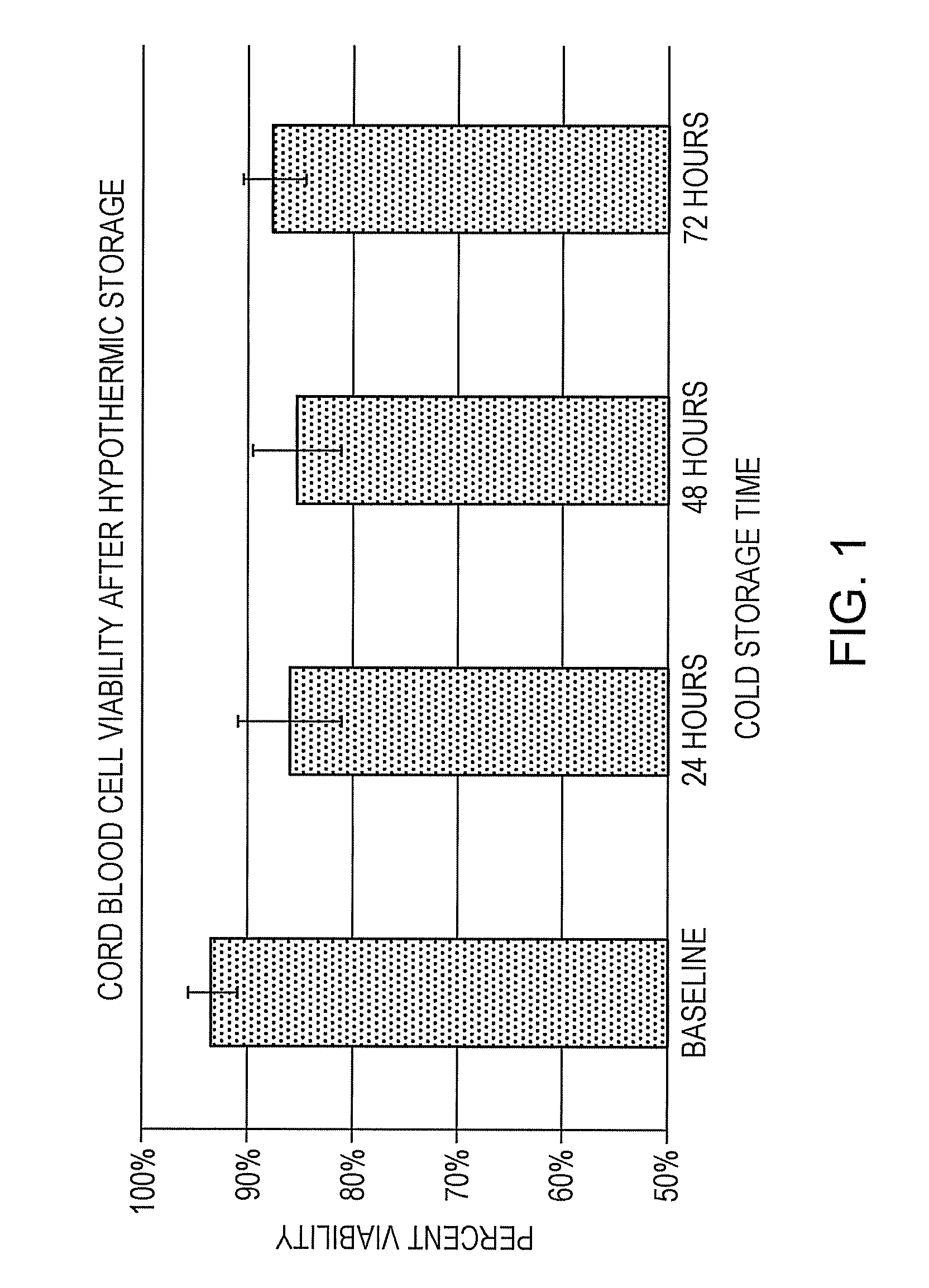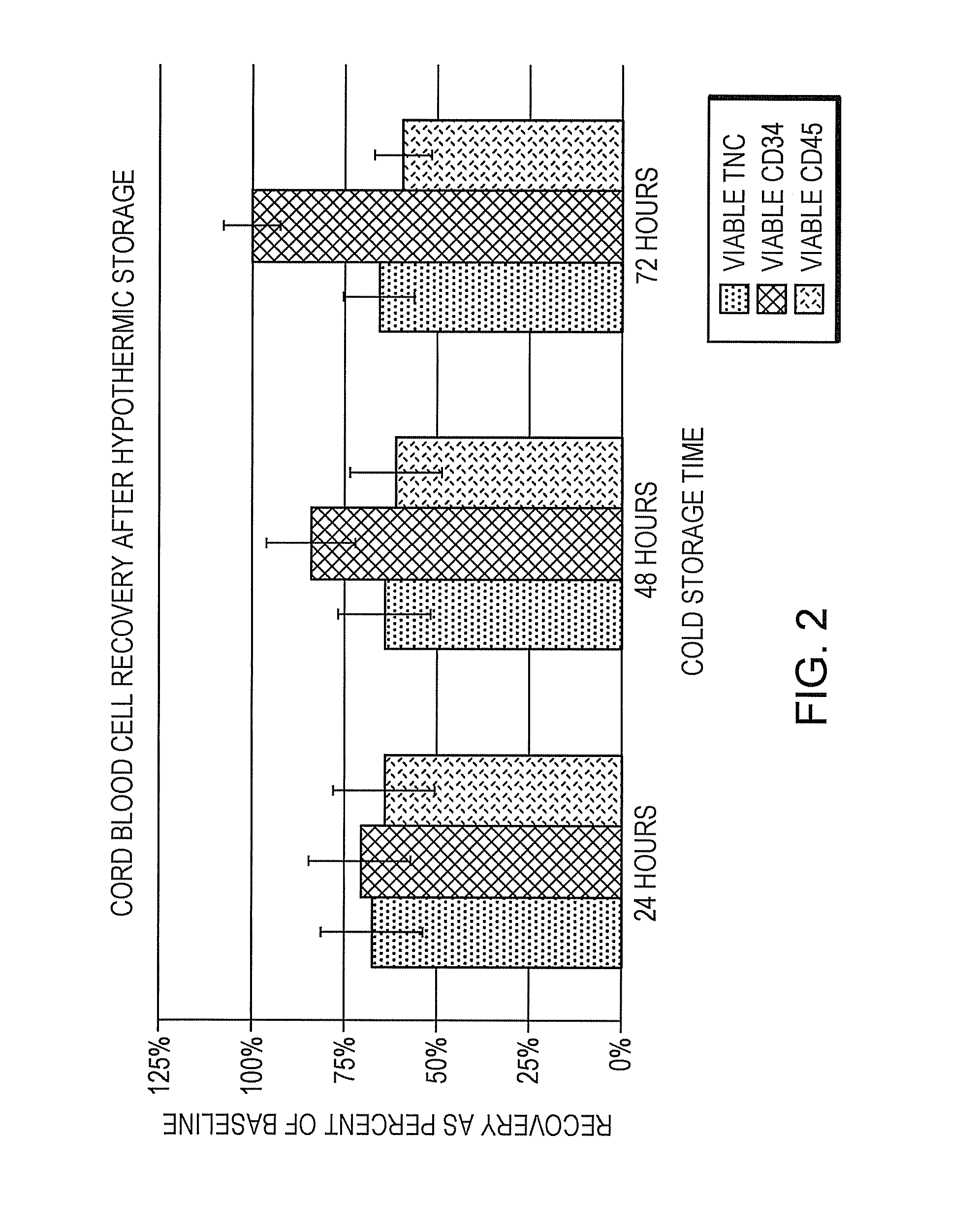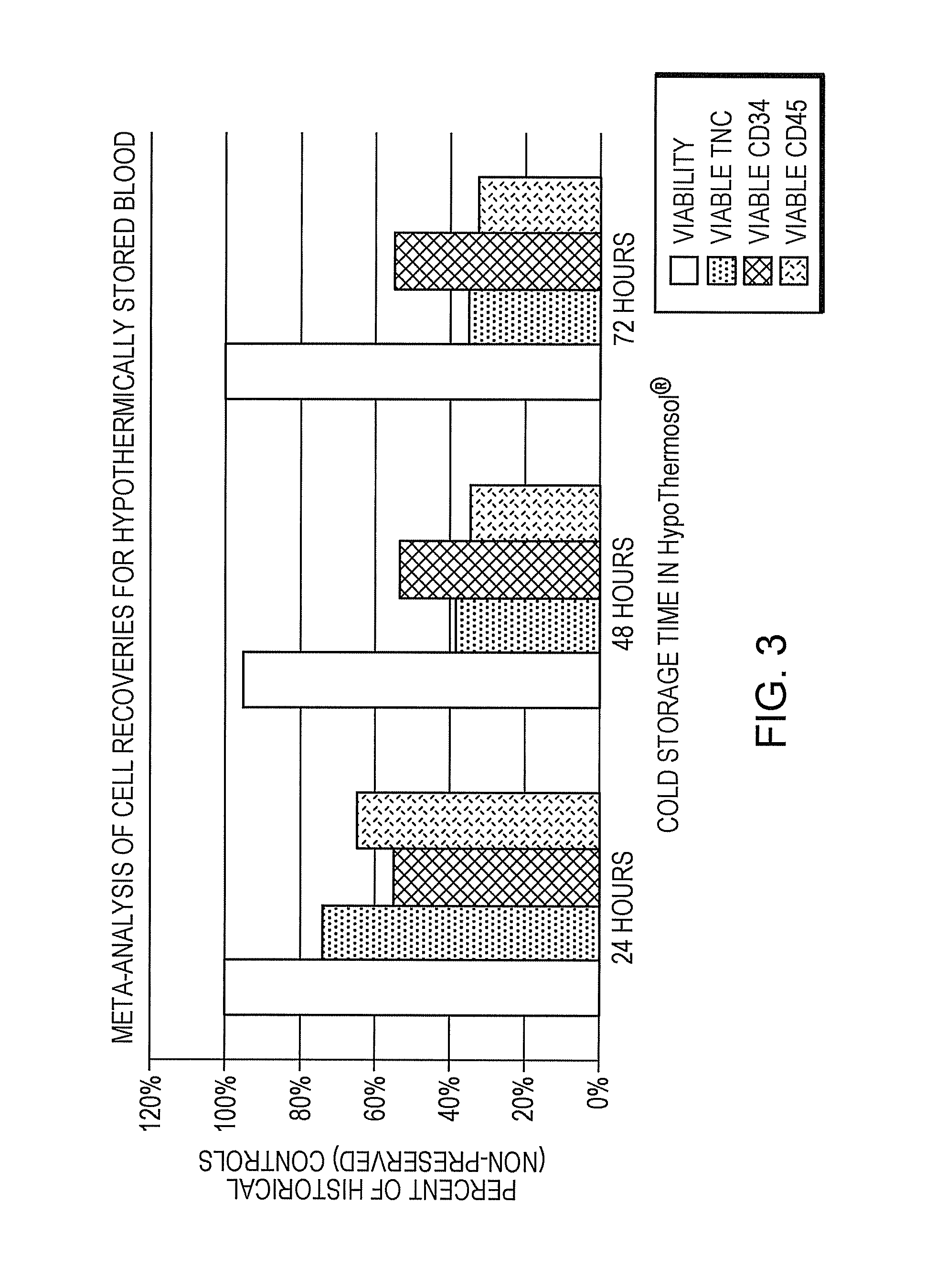Materials and methods for hypothermic collection of whole blood
a technology of material and method, applied in the field of blood banking, can solve the problems of increased morbidity and mortality, increased hospital stay, increased infections, etc., and achieve the effects of eliminating xenographic biologic transmission risk, prolonging holding times for whole blood units, and improving quality
- Summary
- Abstract
- Description
- Claims
- Application Information
AI Technical Summary
Benefits of technology
Problems solved by technology
Method used
Image
Examples
example 1
Hypothermic Whole Blood Collection
[0071]Umbilical cord blood collection (without cord tissue). After delivery of the neonate, cross-clamp and cut the umbilical cord, then follow one of two approaches:
[0072]Closed System Method
[0073]After delivery of the placenta, the proximal and distal ends of the umbilical cord are swabbed with alcohol, allowed to dry and swabbed again with iodine tincture. A 16 G needle attached to a blood collection bag containing a volume of HYPOTHERMOSOL® is inserted into the proximal site as close to the clamp as possible. Blood will begin to fill the bag via gravity drainage. The distal end is then immediately cannulated with a 16 G angio-cath. A 50 ml syringe pre-filled with HYPOTHERMOSOL® is attached to the cannula via luer-lock, and the blood is flushed from the umbilical cord into the collection bag. A total of 150 ml of solution (3 syringes) should be used to completely flush the blood into the collection bag. After collection, the bag is sealed by tyin...
example 2
Blood Cells Stored in Hypothermic Conditions Retain Viability Post-Sedimentation
[0076]Umbilical cord blood was collected at donor sites by venipuncture into citrate-phosphate-dextrose containing blood bags (Baxter US Healthcare). After determination that the unit is “research grade” (TNC≦9×108) the unit was split evenly into two transfer bags. Cold (2-8° C.) HYPOTHERMOSOL® was added to one bag at a 1:1 ratio with the blood volume and stored at 4° C. The other half of the unit served as control and was held at room temperature. Samples were processed after 24 hours and viable total nucleated cell count recoveries were determined via flow cytometry after sedimentation and again after plasma reduction. Controls were held a room temperature for the same duration. Results were expressed as percent recovery as compared to the total nucleated cell count recoveries of the initial blood draw at the time of collection.
[0077]To determine if HTS-FRS+Hetastarch can act as a gravity sedimentation...
example 3
Blood Cells Stored in Hypothermic Conditions for Extended Periods Retain Viability
[0078]Umbilical cord blood was collected at the time of surgery at donor sites from 3 scheduled C-sections by venipuncture into collection bags (Pall Medical) that had been pre-filled with 35 ml of cold (4° C.) HYPOTHERMOSOL®. No anti-coagulant was added. Collection volumes were 87.3, 72, and 85 ml. The units were stored for up to 72 hours at 4° C. and were monitored every 24 hours for coagulation by visual determination of clot formation. TNC viability was determined at each time point using 7-AAD and flow cytometry. No clotting was observed at any time point and, as shown in FIG. 1, cell viabilities were maintained over 72 hours of cold storage as compared to baseline (initial blood draw at the time of collection). In FIG. 1, error bars are + / −1 standard error of the mean. These data demonstrate that cell viability is retained during extended periods of hypothermic storage of whole blood in HYPOTHERM...
PUM
 Login to View More
Login to View More Abstract
Description
Claims
Application Information
 Login to View More
Login to View More - R&D
- Intellectual Property
- Life Sciences
- Materials
- Tech Scout
- Unparalleled Data Quality
- Higher Quality Content
- 60% Fewer Hallucinations
Browse by: Latest US Patents, China's latest patents, Technical Efficacy Thesaurus, Application Domain, Technology Topic, Popular Technical Reports.
© 2025 PatSnap. All rights reserved.Legal|Privacy policy|Modern Slavery Act Transparency Statement|Sitemap|About US| Contact US: help@patsnap.com



